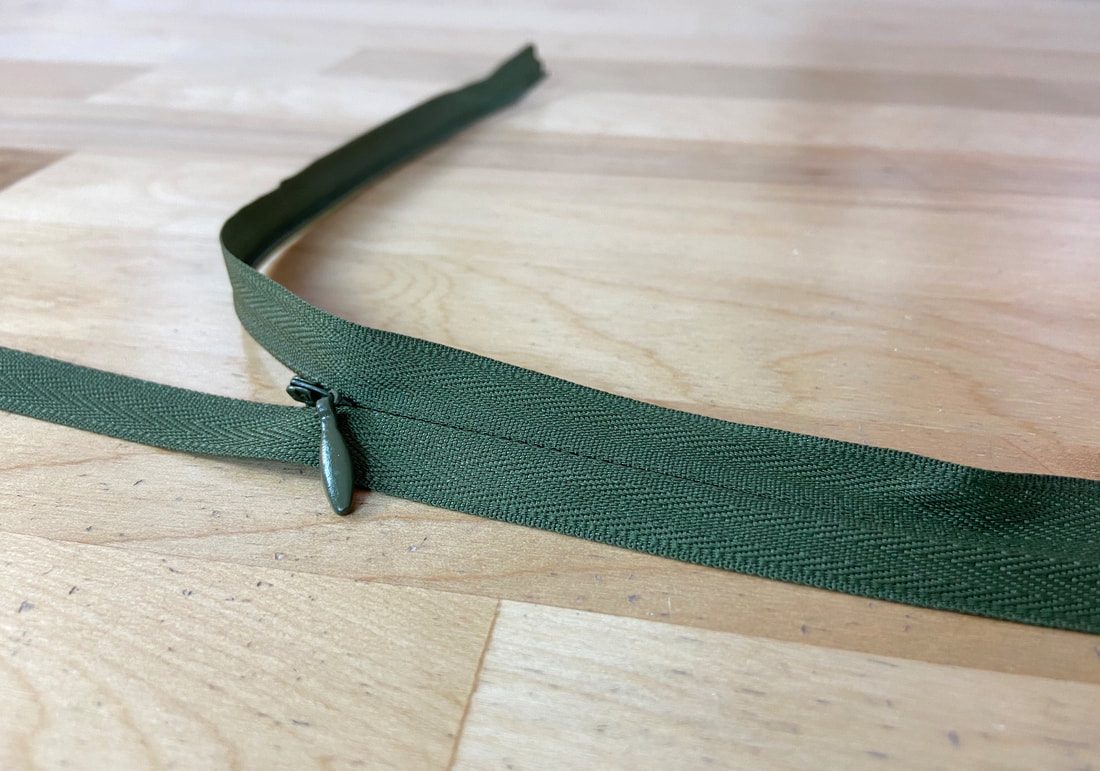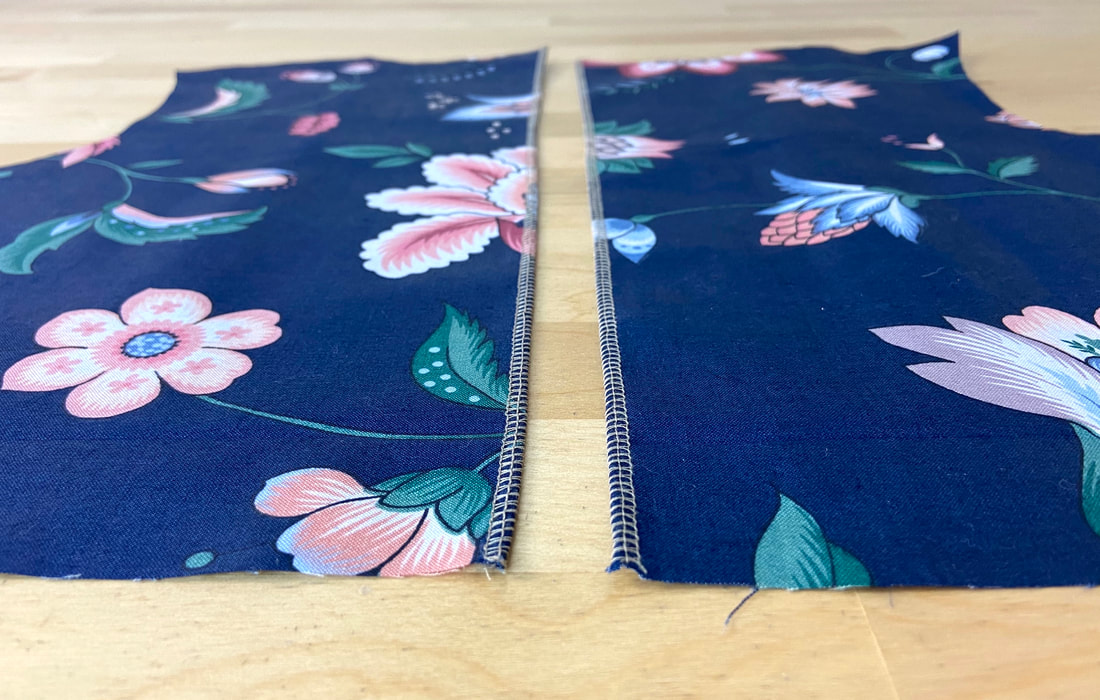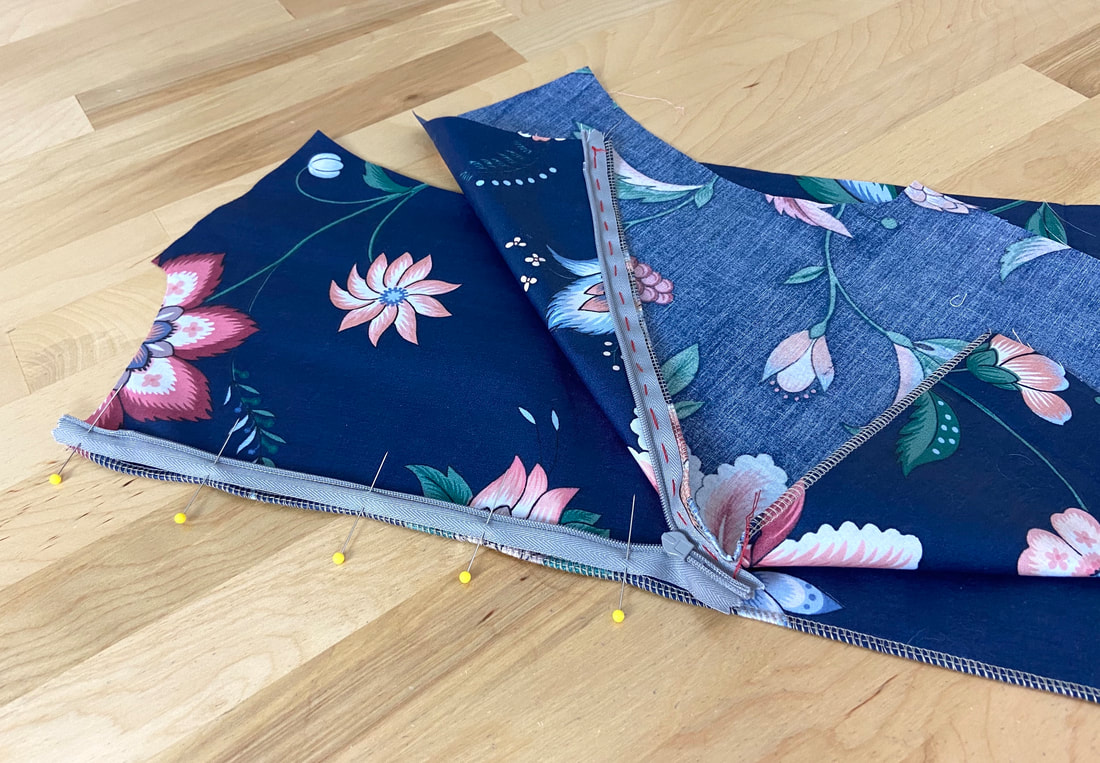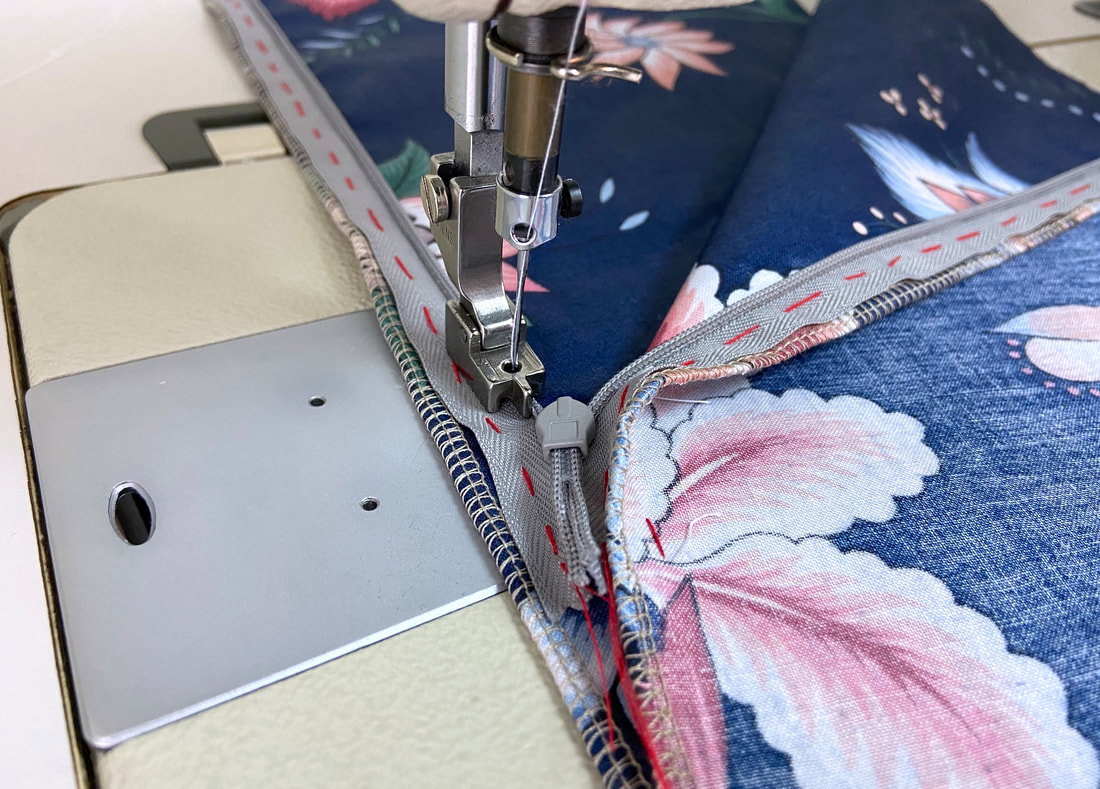In an invisible zipper application, there is no topstitching or zipper teeth/tape visible on the face of the garment.
This unique application requires a special invisible zipper that has hidden, folded-in coils.
After the invisible zipper is inserted, the zipper teeth blend into the seam with only the pull tab visible at the top of the zipper opening. To make the tab less visible, the invisible zipper should match the color of the garment as closely as possible.
An invisible zipper can be used as an alternative to all other zipper applications given that the fabric is able to withstand it. Keep in mind that invisible zippers may not work with high pile, thick, bulky fabrics.
Conventionally, invisible zippers are used on lightweight dresses, blouses, and evening wear. Their ability to disappear into the seam provides a hidden closure that doesn’t disrupt the garment esthetically. Invisible zippers work great with fabrics that cannot withstand topstitching or are not structured enough to form a classic zipper placket.
As opposed to all other zipper applications, invisible zippers are sewn before the seam is stitched. The seam allowances housing these unique zippers are conventionally finished separately since they require to be pressed open.
An invisible zipper application requires a special invisible zipper foot like the one pictured above, although a regular zipper foot can also be used. This tutorial will walk you through using both techniques.
How To Attach An Invisible Zipper Using An Invisible Zipper Foot
1. Before aligning the zipper, clean finish each individual seam edge if needed. In this example, a simple overedge stitch is applied along each edge to encase the cut fabric.
2. To get a better visual of the alignment, place the seam edges flat on the table with fabric right sides up such that they are aligned next to each other.
3. Open the invisible zipper all the way down, and leaving about ½” distance at the top, place the zipper face down such that the coils align with the seamline and the tape is placed within the seam allowance as shown. Insert a few pins through the zipper tape and seam allowance to keep the layers aligned.
4. You may choose to also hand baste if extra stability is needed.
5. Starting at the top, push the zipper coils into the right presser foot channel as shown.
Tip: It helps to gently iron the zipper tape open beforehand to facilitate feeding the coils through the zipper foot channels.
6. Begin stitching until you arrive as close as possible to the slider at the bottom. Carefully backstitch to secure the stitching from unraveling.
7. Next, keeping the zipper all the way open, align the other portion of the zipper face down such that its tape corresponds to the seam allowance and the coils are on top of the seamline. Make sure the second portion is also placed at exactly the same distance from the top edge (1/2” in this case). When the zipper is closed the edges should align perfectly.
It is also a good idea to hand baste for extra stability.
8. Starting at the top, insert the zipper coils into the zipper foot's left channel.
Stitch until you arrive as close to the zipper slider location as possible. Carefully backstitch at this point.
9. Close the zipper. The coils and tape should blend perfectly into the right side of the seam.
10. With the seam on its wrong side, align the rest of the seam edges at the bottom of the zipper. Insert pins horizontally to keep the seam in place. As always, hand baste if needed.
11. Switch to a regular zipper foot. With the needle aligned to the right of the presser foot, stitch from the bottom of the existing zipper stitch all the way down to the hem/bottom of the garment.
12. To complete the seam, iron the seam allowance open at the base of the invisible zipper. Apply the necessary finish to the seam’s top edges and insert a hook and eye if needed.
How To Sew An Invisible Zipper Application Using A Regular Zipper Foot
1. Align and pin one portion of the open zipper to its corresponding seam edge by following Steps 1-3 described above.
When inserting the zipper with a regular zipper foot, it is extremely helpful to hand baste the zipper tape to the seam allowance layer- doing this will significantly facilitate the stitching process. Remember, a regular zipper foot does not provide as much stability as an invisible presser foot does. For that reason, hand basting will allow for more security, and prevent the layers from slipping away from each other as you machine stitch.
2. Starting from the top, place the needle to the right of the zipper presser foot and shifting the coils away from the tape (with your fingers), insert the needle into the fold of the invisible zipper coils as shown.
Begin stitching slowly in this folded groove, keeping the coils lifted with your fingers. The zipper presser foot can slide easily next the coils which naturally keeps them lifted as you stitch. Be careful not stitch through the coils themselves or too far away from them.
End your stitch as close as possible to the zipper slider location at the bottom. Backstitch carefully.
3. Align the other zipper tape to the other seam edge, with right sides touching and the zipper tape corresponding to the seam allowance portion. Make sure you align this second portion at exactly the same distance down from the top edge. Hand baste to prevent the two layers from shifting during machine stitching.
4. Shift the needle to the left side of the zipper foot, and while lifting the zipper coils, stitch into the zipper fold right next to the coils as shown. Stop at the same distance down as the other, already stitched zipper tape. Backstitch carefully.
5. Repeat steps 9-12 above described above to complete the rest of the seam.





























